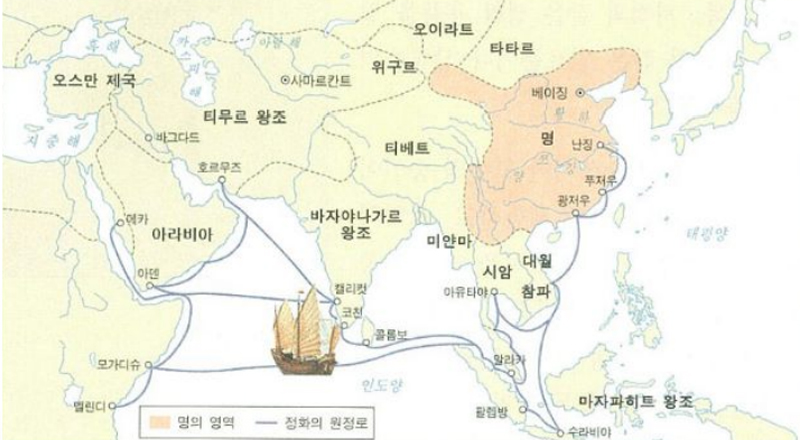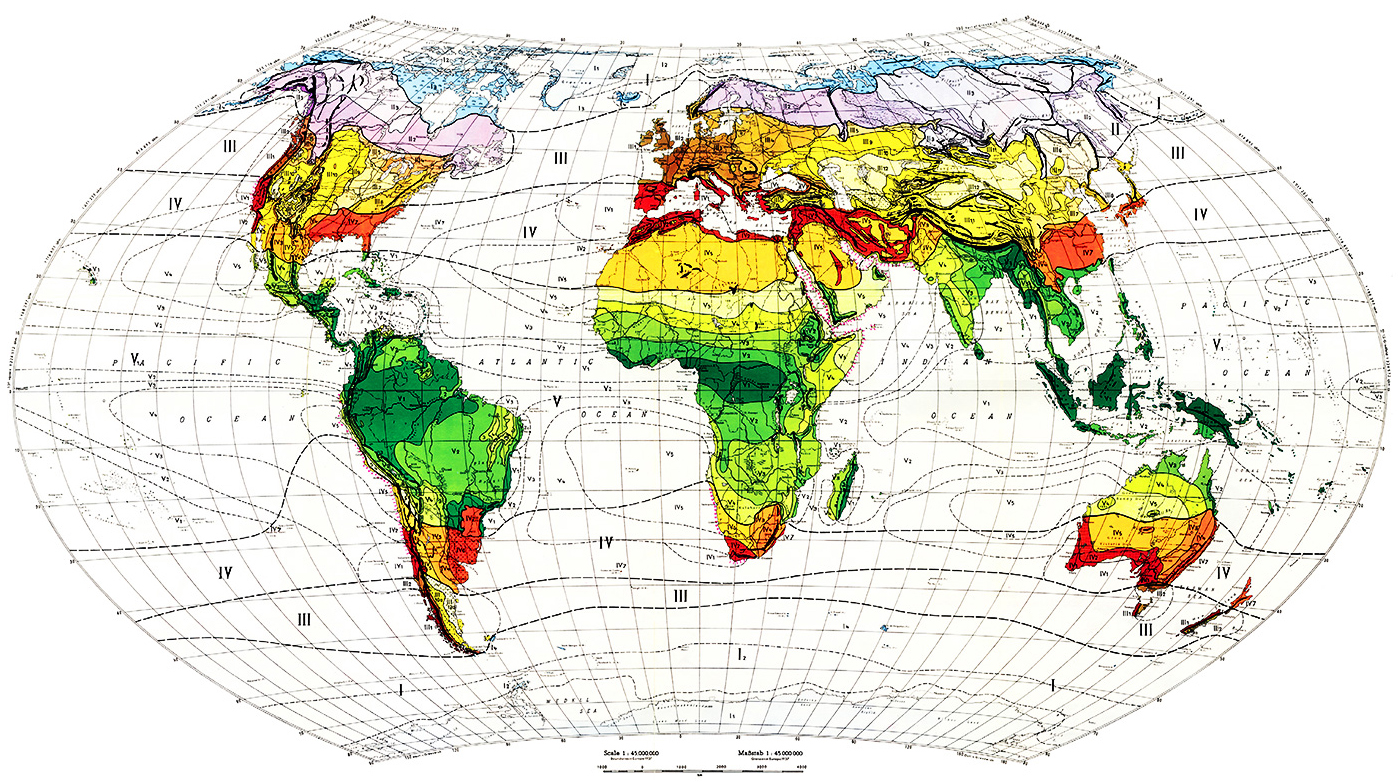ASIA

11세기 동아시아 무역 네트워크
East Asian Global Trade Network in the 11th Century
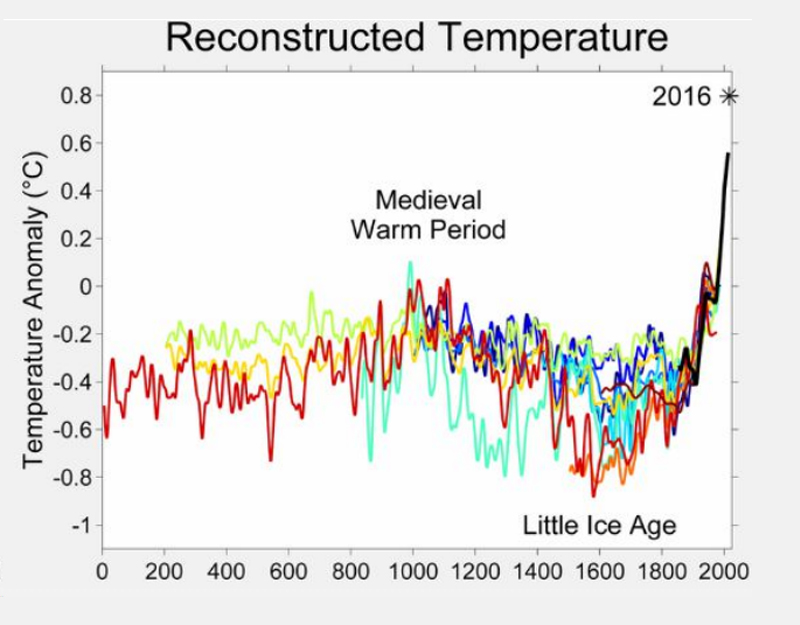
17세기 소빙기와 동아시아의 대기근
17세기의 소빙기가 촉발시켰던 전지구적 위기는 동아시아에서는 독특한 양상으로 전개되었다. 가장 주목할 만한 동아시아의 위기는 1640년대로,중국 명대의 숭정, 조선의 인조, 일본의 간에이 시기에 대기근이 동시에 발생하였다. 동아시아의 대기근은 명백히 소빙기에 의해 촉발된 것이다. 1670년대에도 대기근은 동아시아 세 나라를 사회적 혼란으로 몰고 갔다. 특히 강희제초기의 기근과 엔보 대기근으로 중국과 일본에 엄청난 사상자가 속출했다.
Great famine from North-East Asia in the 17th Century
The global crisis triggered by the Little Ice Age in the 17th century developed uniquely in East Asia. The most notable crisis in North-East Asia was in the 1640s when the Great Famine occurred simultaneously during this period between the Sungjeong of the Ming Dynasty, the King Injo of Joseon, and Japan. The Great Famine in East Asia was clearly triggered by the Little Ice Age. Even in the 1670s, the Great Famine drove the North-East Asian countries into social turmoil. Particularly, the Great Famine in the early days of Kanghee and the Great Famine of Enbo led to a series of enormous casualties in China and Japan.
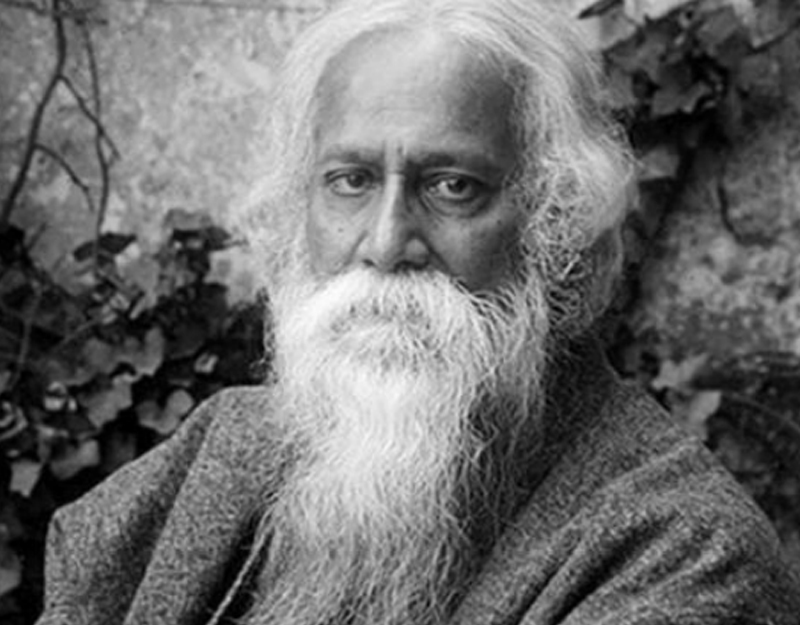
타고르
인도의 타고르(1861~1941)는 시집 <기탄질리>로 아시아 최초로 노벨문학상을수상한 시인 이다. 타고르의 수상 소식은 당시 식민지였던 조선에도 알려져 가장 주목받는 외국의 문학가가 되었다. 그러나 타고르와 ‘벵골 르네상스’와 연관 있다는 사실은 잘 알려지지 않았다. 벵골 르네상스는 벵골 지방에서 일어났던 광범위한 개혁 운동이었는데, 유명한 벵골 지방의 과학자였던 찬드라 보스(Jagadish Chandra Bose)는 자연을 광물, 식물, 동물로 나눈 헤겔의 철학적 입장을 극복해야 한다고 주장했다 1920년대 이후 타고르의 문학 작품을 이해하기 위해선 위와 같은 벵골 르네상스, 그리고 그 속에 자리한 융합적인 측면을 파악해야 한다.
Tagor
Rabindranath Tagore (1861-1941) of India became the first Asian poet to awarded the Nobel Prize in Literature for his poetry collection, Gitanjali. Tagore's Nobel Prize victory attracted considerable global attention, especially in Joseon, a colony at that time. It is less known that Tagore was associated with the 'Bengal Renaissance,' a comprehensive reform movement in the Bengal region. Jagadish Chandra Bose, a prominent Bengali scientist, promoted the idea of transcending Hegel's philosophical framework that classified nature into minerals, plants, and animals. Understanding Tagorer's literary works after the 1920s necessitates a thorough comprehension of the Bengal Renaissance and its intrinsic fusion components.
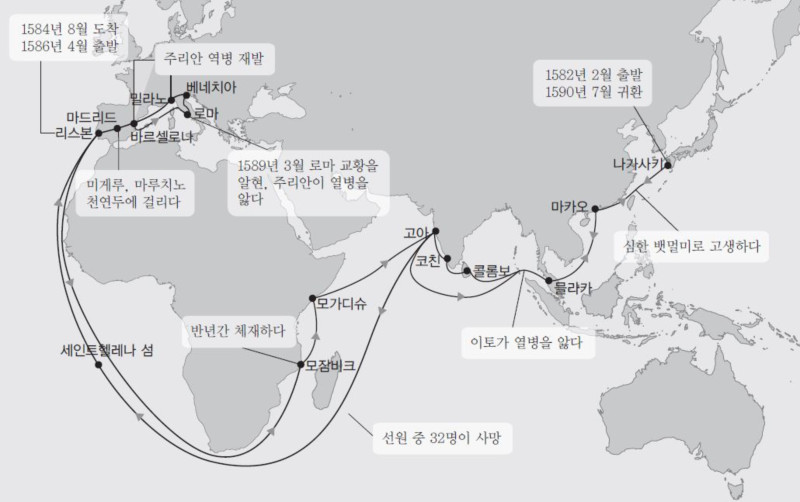
‘덴쇼소년사절단’의 항해 경로
1597년에 예수회가 일본에 파견했던 알레산드로 발리냐노는 규슈 지역의 가톨릭 신자인 ‘기리시탄(Christian) 다이묘들에게 로마 가톨릭 교황을 알현하기를 요청했다. 1582년에 4명의 10대 일본 소년들 – 이토 만쇼, 치지와 미게루, 나카우라 주리안, 하라 마루치노 – 로 이루어진 ’덴쇼소년사절단‘이 로마를 향해 출발했다.
The Voyage of the Tenshō Embassy
Alessandro Valignano, who was sent by the Jesuits to Japan in 1597, asked the Catholic daimyo of Kyushu to introduce the Roman Catholic Pope. In 1582, the Tenshō embassy, comprising four teenage Japanese boys - Ito Mansho, Chihuahua Migeru, Nakaura Jurian, and Hara Maruchino - set off on a journey to Rome
정화의 남해 원정
정화의 남해 원정 이후로 명나라는 해금 정책을 실시했다. 정화의 원정대는 서구의 생물지리적 탐험과 근본적으로 달랐다. 정화의 원정을 평가한 연구자의말에 따르면, 정화는 탐험을 한 것이 아니라 중국과 아랍 사이의 기존의 교역로대로 항해했을 분이다. 게다가 원정의 일차적 목적은 무역이 아닌, 외교 관계의 수립 또는 강화에 있었기에 원정 지역을 식민화하는 데 전혀 관심을 두지 않았다. 아울러 명나라의 어느 누구도 정화의 원정을 이어갈 생각이 없었을뿐 아니라 원정에 관한 기록조차 사라져버렸다
South China Sea Expedition of Zheng He
Following Jeonghwa's expedition to the South, the Ming Dynasty implemented a policy of non-interference. Jeonghwa's expedition differed significantly from Western biogeographic explorations. An analysis conducted by a scholar on Jeonghwa's expedition suggested that Jeonghwa likely followed established trade routes between China and the Arab world instead of engaging in exploration. Furthermore, as the main objective of the expedition was not trade but rather the establishment or reinforcement of diplomatic ties, there was no interest in colonization. Additionally, there was no intention within the Ming Dynasty to continue Jeonghwa's expedition, and the expedition's records have since been lost.

포르투갈과 일본의 문화접변
14세기 왜구의 활동은 포르투갈 인들이 일본의 존재를 인지하는 데 결정적인 역할을 했다. 이후 예수회 선교자였던 프란치스코 하비에르는 1549년 다네가 시마 섬에 도착하면서, 일본과 포르투갈인들의 문화교류가 이뤄지게 되었다. 오다 노부나가는 예수회에 대해 개방적인 입장을 견지했으나, 후계자이던 도요 토미 히데요시가 일본을 통일하자 상황이 변하였다. 히데요시는 1597년 나가 사키에서 사제와 신도들을 십자가형에 처하면서, 일본에서 가톨릭은 탄압받기 시작하였다. 그러나 포르투갈과의 교류로 시작된 서양 문물에 대한 수용은 이 후에도 데지마 섬에서 네덜란드와의 교역을 중심으로 유지되었다.
Cultural Exchange between Portugal and Japan
The activities of Japanese pirates in the 14th century significantly influenced the Portuguese acknowledgment of Japan's existence. Subsequently, in 1549, when Francis Xavier, a Jesuit missionary, landed on Tanegashima Island, it marked the beginning of cultural interactions between the Japanese and the Portuguese. Initially, Nobunaga Oda was receptive to the Jesuits; however, the situation changed under his successor, Toyotomi Hideyoshi, who unified Japan. The turning point occurred in 1597 when Hideyoshi ordered thecrucifixion of priests and believers in Nagasaki, leading to the suppression of Catholicism in Japan. Despite this, the introduction of Western culture, initiated through interactions with Portugal, continued to revolve around trade with the Netherlands on Dejima Island
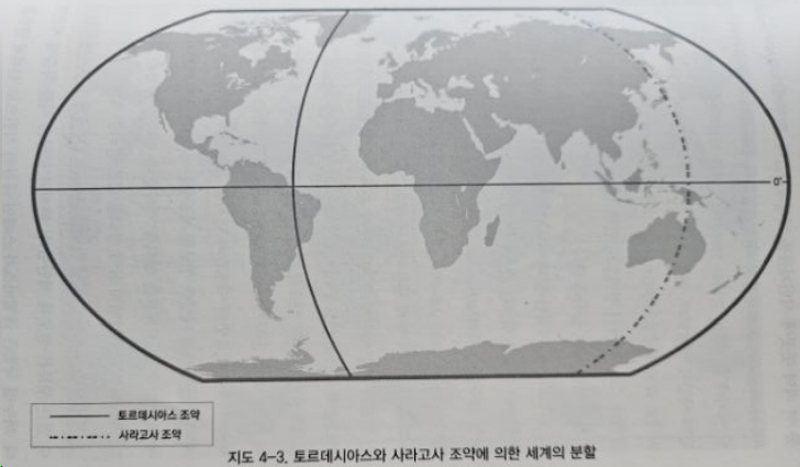
토르데시아스, 사라고사 조약과 몰루카 제도
신항로 개척 이후 스페인과 포르투갈은 새롭게 발견한 지역을 먼저 자치하기 위해 경쟁했고, 이에 1494년 교황의 중재 하에 토르데시아스 조약이맺어졌으나, 이후 향료의 산지인 몰루카 제도가 발견되면서 다시 한번 갈등이발생하였다. 이에 양국은 1529년 사라고사 조약을 통해 다시 한번 합의에 이르렀다. 포르투갈이 35만 두카트를 지불하는 대가로, 스페인은 포르투갈에 몰루카 제도의 지배권을 포르투갈에 양도했다.
Treaty of Tordesillas and Zaragoza, and Molucca Islands
Following the establishment of new trade routes, Spain and Portugal engaged in a competition for the initial control of their recently explored territories. In 1494, the Treaty of Tordesillas was ratified with the intervention of the Pope. However, tensions resurfaced upon the discovery of the Moluccas Islands, renowned for their aromatic spices. Subsequently, the two nations resolved their differences through the Treaty of Zaragoza in 1529. Spain ceded authority over the Moluccas Islands to Portugal in return for a payment of 350,000 ducats.
